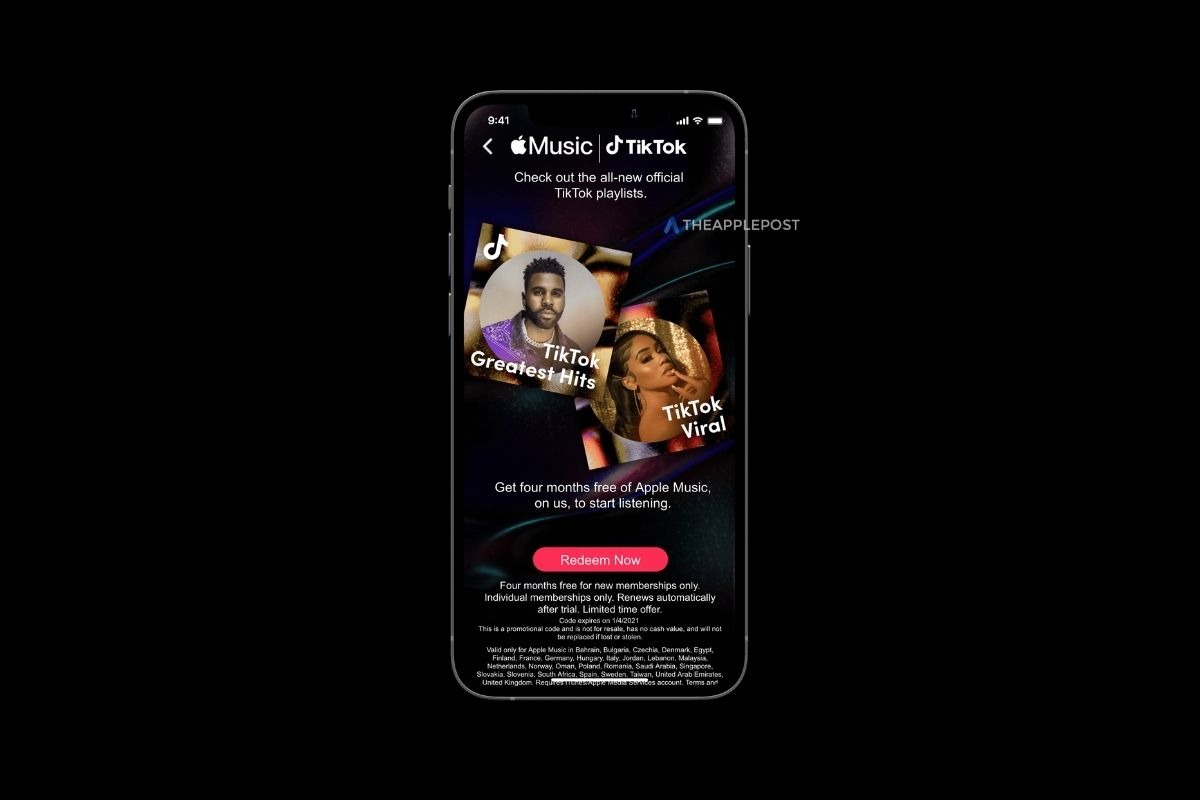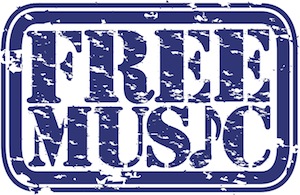- We amplify your music reach. It could be Billboard, Apple music, iTunes Charts, Spotify Playlists or Shazam, your music will be promoted to the top. We put your music on Radar!!! Extend your audience geographically or globally, ChartsYou make it easy to get exposure for your music release.
- Apple Music and Shazam have launched a new promotion in partnership with American singer-songwriter Dolly Parton during Super Bowl. Through this offer, new Apple. Subin B - Feb 8, 2021.
Apple’s HomePod smart speaker, which is a particularly great accessory for Apple Music users, comes with a $50 Apple gift card if you buy it at an Apple Store, but you can also find the HomePod. Apple also ran a 'Test Drive a Macintosh' promotion that year, in which potential buyers with a credit card could try a Macintosh for 24 hours and return it to a dealer afterwards. One ad contrasted the original Macintosh and its simple user brochure to the IBM Personal Computer with its stacks of complicated manuals.
The future of music distribution comes down to two words: Metadata matters.
Metadata ensures your songs are ready for distribution and release. If your metadata isn’t in order, your music simply isn’t ready to share…

The information you enter as metadata allows your music to be properly stored, sorted and identified everywhere your music is available. That means platforms like Spotify, Apple Music, YouTube and even Shazam.
It makes your music discoverable.
Your music royalties are also dependent on your metadata. Without correct data attached to your music, you run the risk of not receiving the proper credit for you streams.
And that could mean losing your paycheque. Being professional with your music means being professional with your metadata. You can’t have one without the other.
The solution? Get it right before you release so your music can be properly identified no matter where it’s played.
In this article you’ll learn what metadata is, how to make your music discoverable and how to ensure you’re getting recognized for your work.
What is music metadata?
Music metadata is the information included in audio files used to identify, label and present audio content.
Metadata is used by every major device and music streaming application including smartphones, Spotify, Apple Music, YouTube and all other major online music services.
Metadata includes information like artist, genre, label, song titles, album name and track numbers.
Metadata began as basic info encoded directly into the files on a CD. Today it refers to any information that needs to accompany a music file on streaming services or digital stores.
Streaming platforms rely on metadata. It’s more important than ever. Without metadata your tracks would have no context—just anonymous files in the sea of data online.
Without metadata your tracks would have no context—just anonymous files in the sea of data online.
Think about it this way: the more detailed your metadata is, the easier it is to deliver your music to the right listeners.
Skimming over your metadata is like sending your music to the airport with no passport, no boarding pass, no money and no neck pillow. It’s not going to reach its destination without a lot of confusion and stress.
That’s why strict conventions for metadata are necessary for major streaming platforms like Spotify and Apple Music.
It’s also why metadata issues can stop your release in its tracks. If the metadata is incomplete or incorrect, it won’t make the cut for digital distribution.
How does metadata work?
Metadata used to be written into a special part of the file that didn’t contain audio. That’s how metadata on CDs and other media was originally stored.
Metadata can still be included this way. You can add it to your own files using tagging tools such as like Kid3.
It’s not a bad idea to include metadata directly in your WAVs, but streaming services almost always rely on the metadata submitted by your digital distribution to identify your music.
That’s why you have to be extra careful to get it right.
When it comes to submitting metadata for streaming services, your digital distributor will take care of sending it—if you enter it for them properly.
How to get your metadata right
Here’s a full list of the data you need to confirm before you can distribute your music successfully:
- Track Title: the name of your song
- Genre: the primary genre of your track
- Subgenre: the secondary genre
- Primary Artist: the main artist on the track. You’ll need to enter this exactly the same way for every track in the release.
- Featured Artists: any other artists featured on the track. Do not write featured artists in the primary artist field—that’s what this one is for!*
- Composer: The person who wrote or contributed music for the song
- Publisher: The publisher representing the composer. Enter the composer name again if there is no publisher.
- Producers: the producer(s) credit on the track
- Additional Contributors: Anyone else that worked on that track that should be credited ISRC: The unique identifier that gives your track its own digital fingerprint. If you don’t have an ISRC for your release LANDR will provide one for free.
- Explicit Content: indicates whether the track contains explicit content according LANDR’s guidelines.
- Lyrics Language: the language of the sung lyrics
- Lyrics publisher: The publisher representing the lyricist/lyrics contributor
- Composition Owner: The owner of the composition rights
- Year of Composition: The year the track was composed
- Master Recording Owner: the owner of the sound recording
- Year of Recording: The year the recording took place.
- Release Language: The language of the release itself. Even if you are intending to distribute your release in a different country or territory the release language must be the language of the metadata you are entering.
This list might seem excessive, but it’s worth it to enter as much of it as you possibly can.
4 metadata mistakes to avoid
Metadata is how streaming services do quality control on their platforms.
That means if something isn’t quite right, your release won’t make it.
Metadata that doesn’t conform to the rules will stop your release from making its way to stores.
Metadata that doesn’t conform to the strict rules can stop your release from making its way to stores.
Here’s 4 essential steps to make sure your metadata doesn’t cause any issues with your release.
Shazam Apple Music Promotion Code
1. Triple-check your spelling and formatting
Apple Buys Shazam
Make sure to always spell your track and artist names correctly and exactly the same way each time.
Your spelling and formatting must be consistent every when you credit an artist name, whether it’s yourself as the primary artist, or anyone else as the featured artist.
Even if you need to enter names multiple times, never abbreviate them or add extra punctuation.
If you need to enter an additional artist or contributor use the “+” icon to add an additional field to the form.
It’s important not to combine artist names, such as “Toots & The Maytals” unless you want your release to show up on an entirely separate artist profile on digital platforms.
Do not add multiple contributors as a list in a single field.
2. Enter the correct release language
The release language field indicates the language and character set of your release.
Shazam Playlist
Even if the language of the lyrics is different, use this field to enter the language of the metadata you’ve been filling in.
3. Don’t try to manipulate the system
Metadata that doesn’t give meaningful information isn’t useful and doesn’t contribute positively to the quality of your release on streaming services.
Metadata that doesn’t give meaningful information isn’t useful and doesn’t contribute positively to the quality of releases on a platform.
Take a straightforward approach to the guidelines for metadata.
Don’t misrepresent information about your genre or subgenre for effect. This only makes listeners (and algorithms) confused! How to sketch clothes designs.
4. Pay attention to your album artwork
Album artwork absolutely must be consistent with the metadata entered for the release. You have to give the artwork the same level attention to detail as the rest of the information about your release.
When major streaming platforms say that they don’t tolerate URLs, social media handles or excessive text in album artwork, they mean it.
Attempts to drive traffic outside of the platform bring down the overall sense of quality on streaming services—don’t bother with these kinds of tactics.
Having accurate, clear and consistent information is what will benefit your music in the long run.
Having accurate, clear and consistent information is what will benefit and promote your music in the long run.
Remember that these outlets pay massive fees to keep top artists in their libraries. If you want your content to be presented alongside the top names in music you must respect their rules.
Metaphysical release

Your track’s metadata is what makes it a quality product on a streaming service.
Getting it right is crucial for getting that product to audiences.
Now that you know every detail about LANDR’s metadata requirements, you’re ready to get started with your first release.
Alongside Super Bowl LV this evening, Apple is teaming up with country music artist Dolly Parton to offer 5 free months of Apple Music to new subscribers. In addition to the new promotion, you can also use Shazam to identify a Dolly Parton song during the Super Bowl to unlock a special surprise…
For those unfamiliar, Dolly Parton created a new version of her hit song 9 To 5, cleverly named 5 To 9, as part of a Super Bowl commercial for Squarespace. The country music artist tweeted this evening that if you use Shazam to identify 5 To 9 during the Super Bowl tonight, you’ll unlock a “special surprise” as well as up to 5 free months of Apple Music.
If you miss out on the opportunity to Shazam the song during the Super Bowl, you can use this link to directly head to the song in Shazam and start the process of redeeming your free 5 months. You might also find a banner offering the Apple Music extended trial period in Shazam settings.
Shazam Apple Music Promotional
The offer is valid in the following countries and it is only available to new subscribers.
Armenia, Australia, Austria, Azerbaijan, Belgium, Brazil, Chile, Denmark, Egypt, France, Germany, India, Indonesia, Israel, Italy, Japan, Jordan, Kazakhstan, Lebanon, Malaysia, Mexico, Moldova, Netherlands, Nigeria, Norway, Philippines, Poland, South Korea, Romania, Russia, Saudi Arabia, Singapore, Slovenia, South Africa, Spain, Sri Lanka, Sweden, Switzerland, Thailand, Turkey, United Kingdom, Ukraine, United Arab Emirates, Canada, United States
Apple has regularly offered extended Apple Music free trials through Shazam, which is the music recognition service it acquired in 2017. Apple traditionally offers three months free of Apple Music to new subscribers.
Apple’s last promotion offering 5 months of Apple Music for free to Shazam users expired last month. Today’s new promotion runs through March 31, 2021.
FTC: We use income earning auto affiliate links.More.
